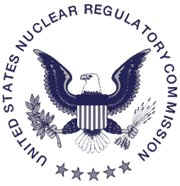Monticello DEIS out for Comment
December 26th, 2005
The Monticello DEIS for the Dry Cask Storage Certificate of Need is out for Comment — no hurry, Comments are due March 3, 2006.
Public Meetings:
February 2 in Monticello (specifics to be announced)
February 16 in Metro (specifics to be announced, probably PUC meeting room)

Here’s the DEIS from the PUC website: Draft Environmental Impact Statement
Here’re the general rules that they’re supposed to follow, what they’re supposed to include: EIS Rules
More importantly, here’s the EQB Scoping Decision, what must be there per the EQB which no longer has authority. READ THIS SCOPING DECISION, then, COMPARE with the DEIS!
If you’re looking at the DEIS, you might note that the docket number in the link is wrong, so if you want to get to the “agency formerly known as the EQB” docket, here’s the link: Monticello Docket
If you want to look at the PUC Docket, it’s E002/CN-05-123, and it’s easy to get there from here.
First click here to get “eDockets”
Then type in “05” for the year, and “123” for Docket No.
Ta-da! You’re there. You’ll note you can’t get there without a Docket No., and it’s hard to get the Docket No. unless you have piles and piles of papers lying around with E002/CN-05-123 on them.
Here’s the Monticello pool:

Points to note in the DEIS, well, it’s mostly things that aren’t there.
Costs – there is no cost basis for alternative analysis, much less analysis
Benefits – nothing on benefits at all. No indication of impact of this plant and storage on community.
Alternative Generation analysis – incorporates cost assumptions of CoN, but no specifics here and no direct references or links. Narrative analysis is a bunch of conclusory statements, not analysis, and again, no direct references or links, no details.
… sigh… what’s it going to take to get a serious analysis?
============================================================

While digging around for something on NRC pre-emption, I found this:
What’s interesting about this is that Pawlenty wanted to enter into an agreement for the state to take over certain limited regulation of things nuclear, nothing big like nuclear plants. As they were doing their background, NRC staffers were alerted to a bunch of laws in the state of Minnesota that improperly, impermissibly intrude on NRC turf. And that’s no small potatoes, NRC pre-empts everything associated with nuclear except for one little area reserved for the state: ECONOMICS!
Here are the specifics that they are concerned about:
http://www.revisor.leg.state.mn.us/stats.
(At this Internet site see the following Mn. Stats.
115.069,116C.705 through 116C.83, 216B.1691, 216B.243, 216B.2421 through 216B.2423, and Minnesota Regulations 4410.4300 and 4410.4400) and history of law at:
http://www.leg.state.mn.us/lrl/issues/prairieisland.asp
and
http://www.house.leg.state.mn.us/hrd/pubs/nucxcel.pdf.
Anyway, the NRC did go ahead with the Agreement, saying that this stuff that they found was separate from the Agreement, compartmentalizing, but the Team Leader had a very specific and eloquent outraged hissy fit, Appendix B, Attachment 4, starts on pdf p. 68, It’s a fascinating read, a look down the dragon’s throat, summarized at the end:
The actions by the State are in direct conflict with the Act, the NWPA, and the NRCâ??s regulatory
program (e.g. the NRC issued Prairie Island operating license) for the following reasons: (1)
Absent an Agreement, a State cannot regulate activities involving byproduct, source, and
special nuclear materials, including the setting of dose limits for an ISFSI. Minnesota had no
Agreement when the dose limit was established. (2) Even with an Agreement, States cannot
regulate ISFSIs because it is preempted to the Federal Government by both the Act and the
NWPA. (3) The Stateâ??s actions are in direct conflict with NRC regulations in 10 CFR 8.4, 72,
and 150, which indicate that a State cannot regulate these activities. (4) The Stateâ??s action
conflict with the responsibilities Congress gave to NRC in the NWPA, which directed the
Commission to encourage and expedite the effective use of spent fuel pool storage at civilian
Nuclear Power Plants, including the use of reracking, fuel compaction, transshipments and if
needed, the addition of new storage capacity. The law also directed the Commission as a part
of its regulation of spent fuel storage to: (a) protect public health and safety, and the
environment; (b) consider economic impacts; (c) ensure continued operation of the reactor;
(d) apply any applicable laws; (e) consider the public views of persons near facility; and
(f) develop regulations on spent fuel storage, which resulted in 10 CFR Part 72, which provide
an adequate level of protection. (5) The application of two concurrent radiation dose standards
to the same facility by a State and the NRC is dual regulation and is not in concert with §274 of
the Act.
Is anyone paying attention to this??? I’ve been met with blank stares when I challenge Minn. Stat. 116C.76 as beyond state authority, not something we can enforce. And the NRC says it’s a whole lot more than that…
This issue isn’t going to disappear!
Leave a Reply